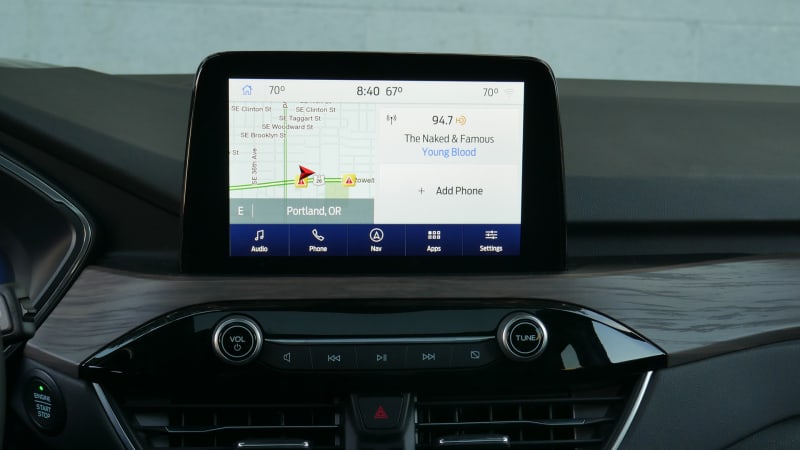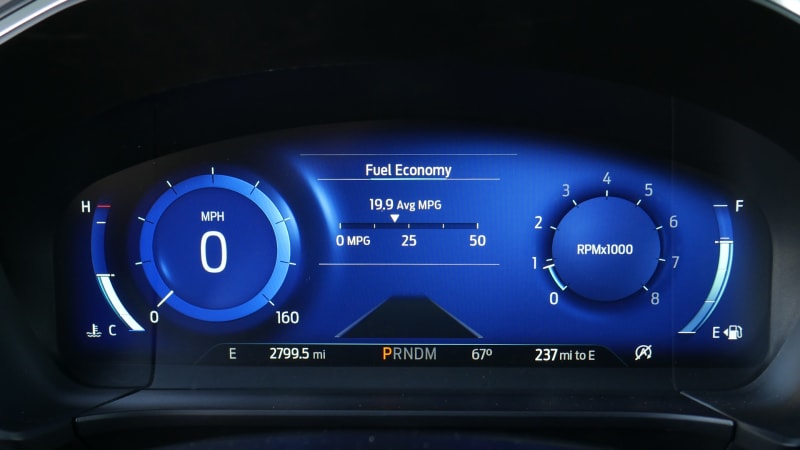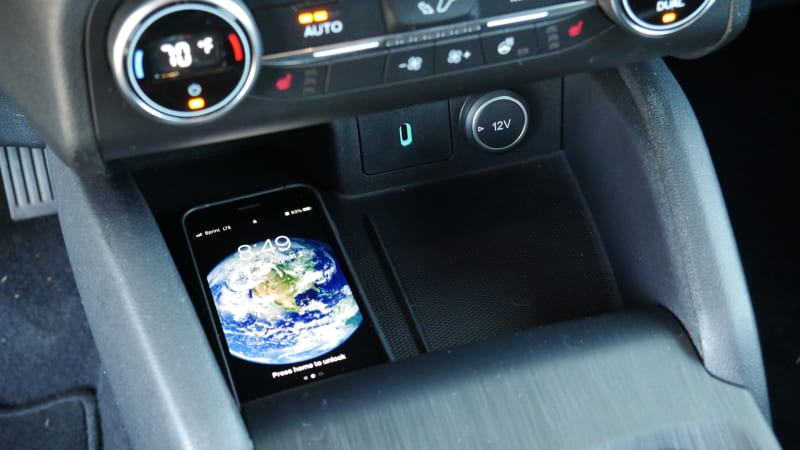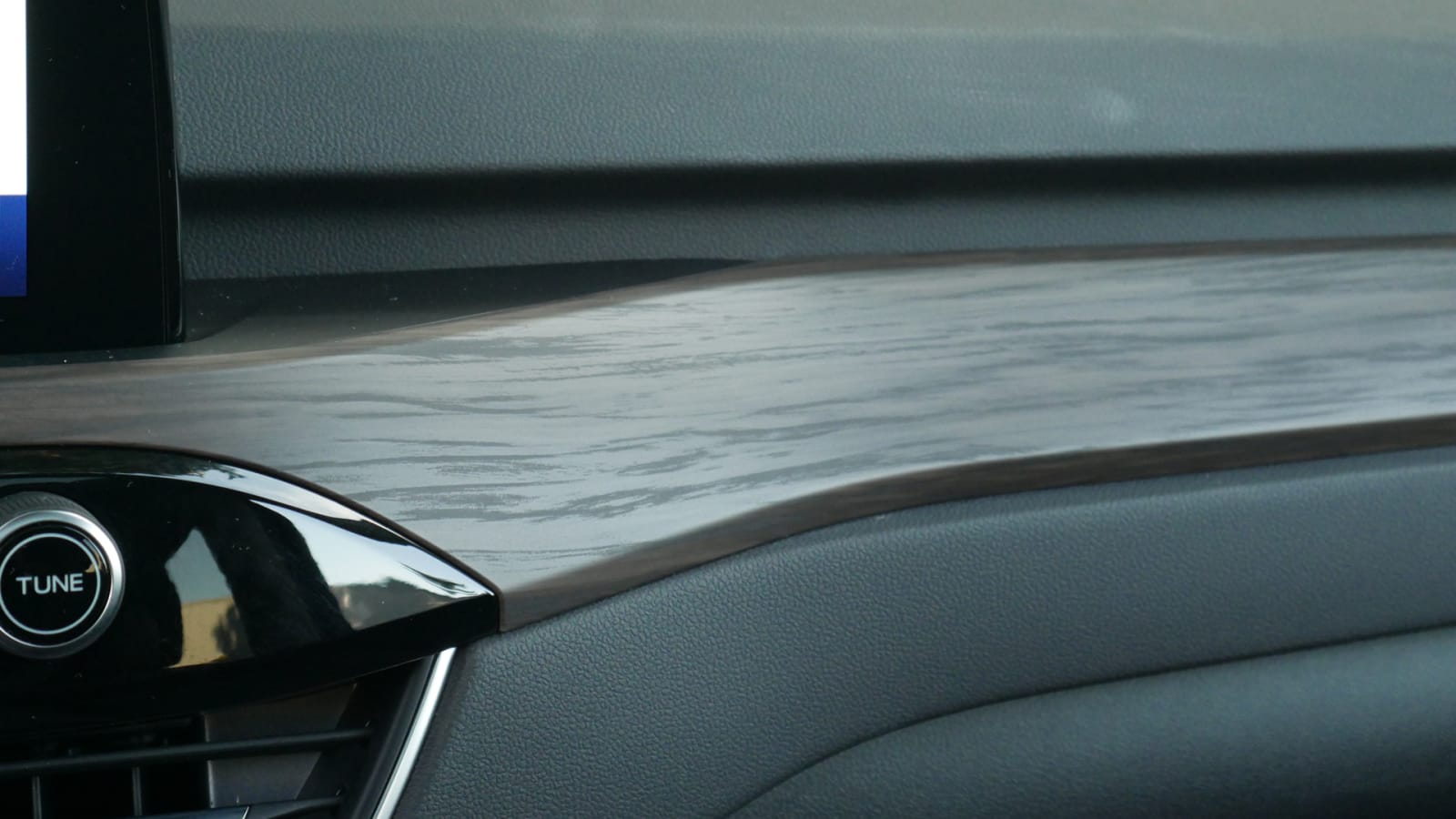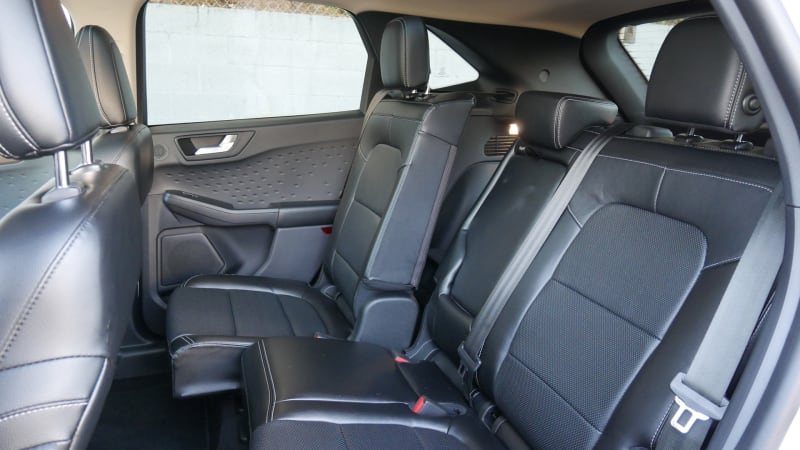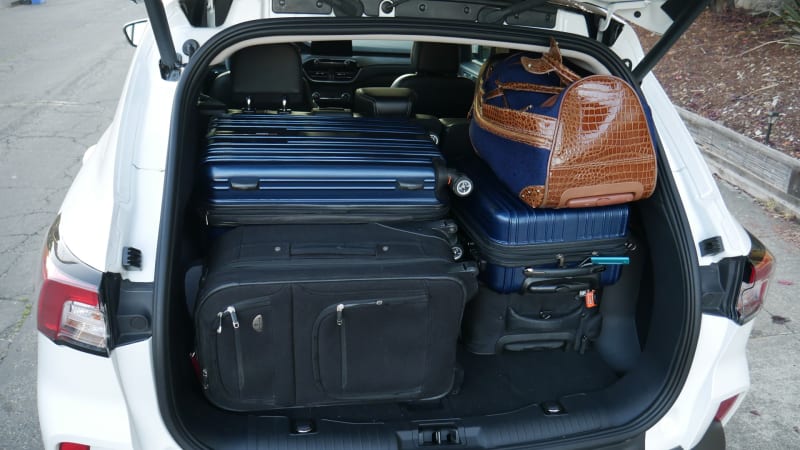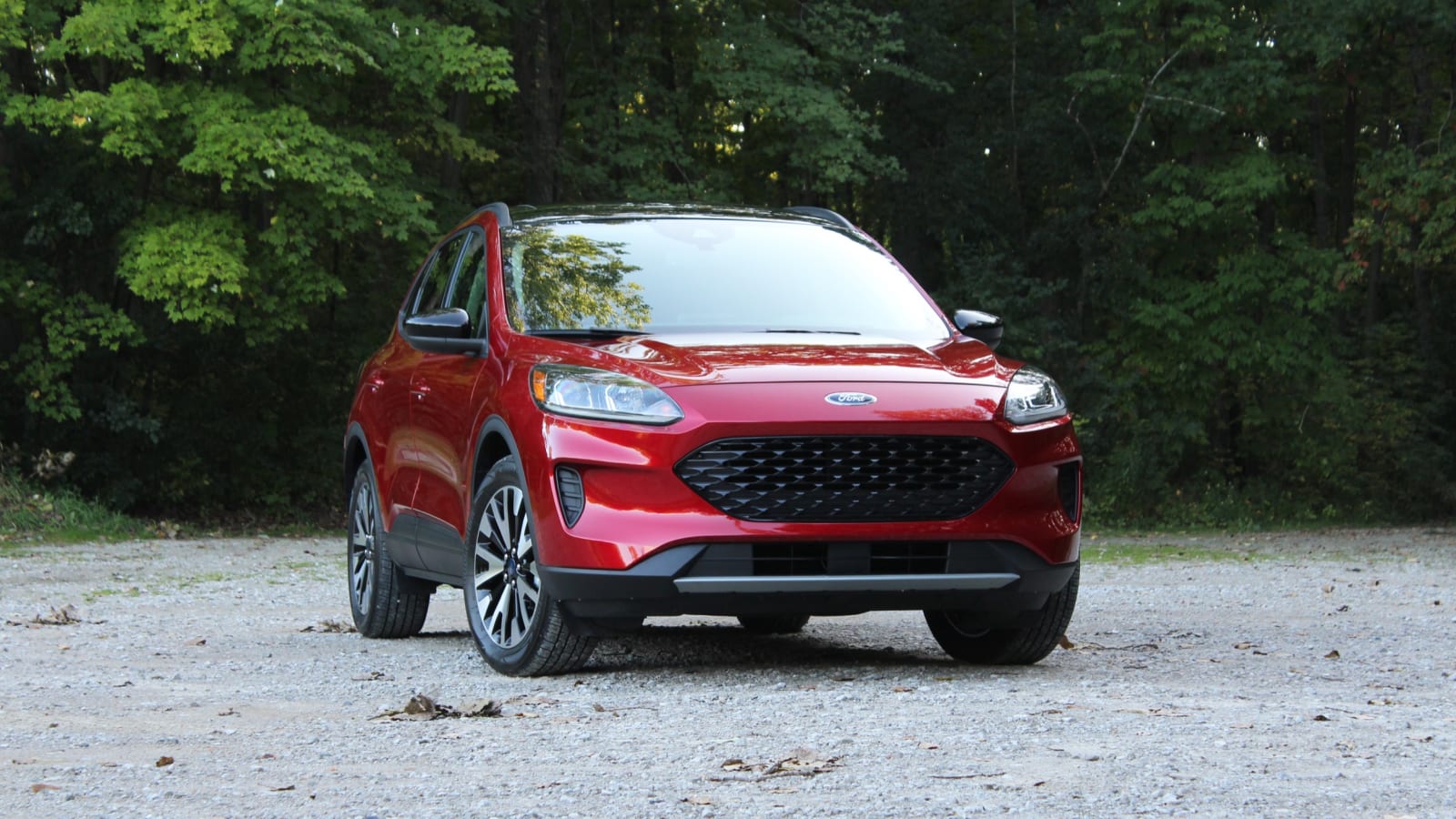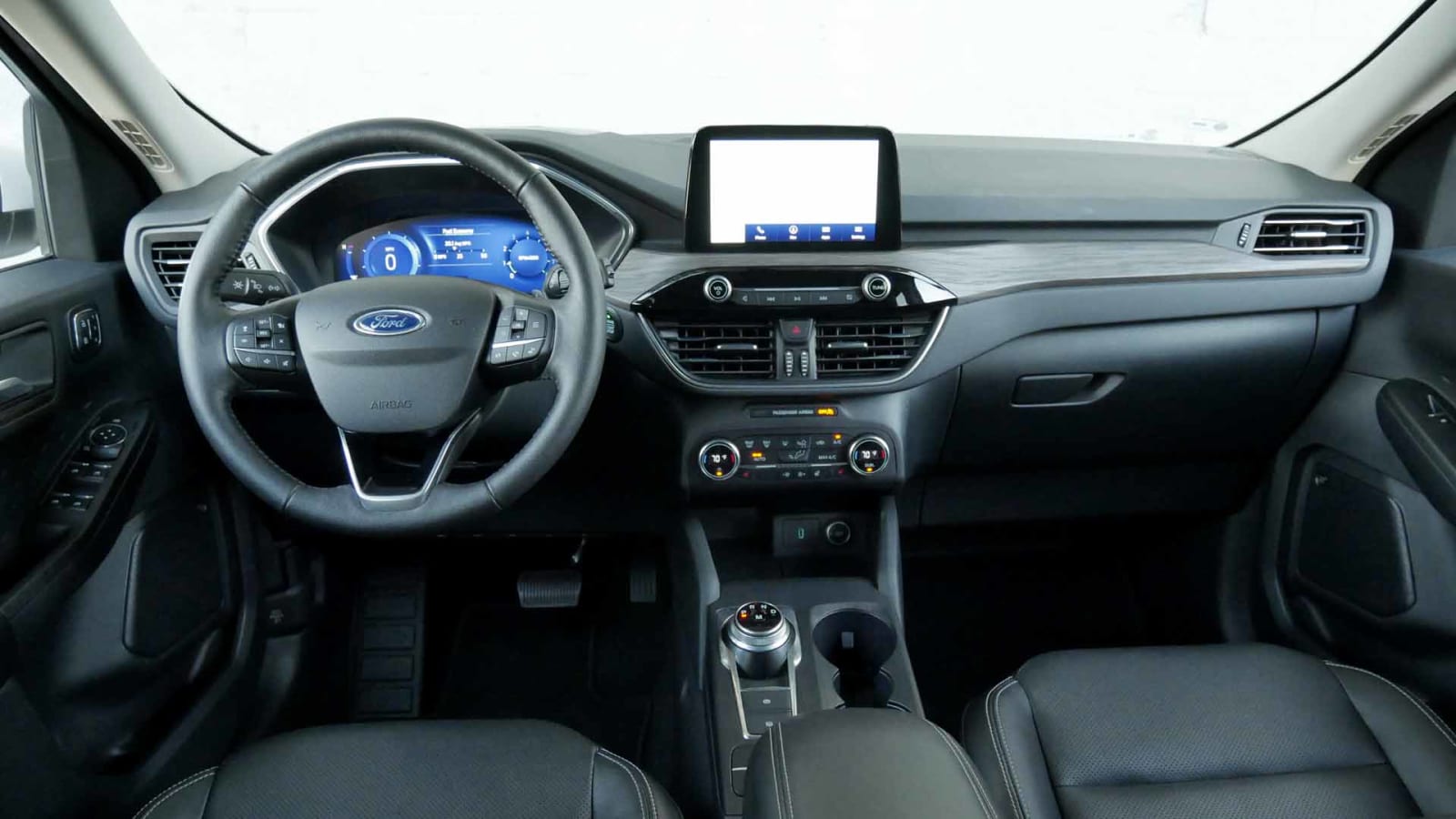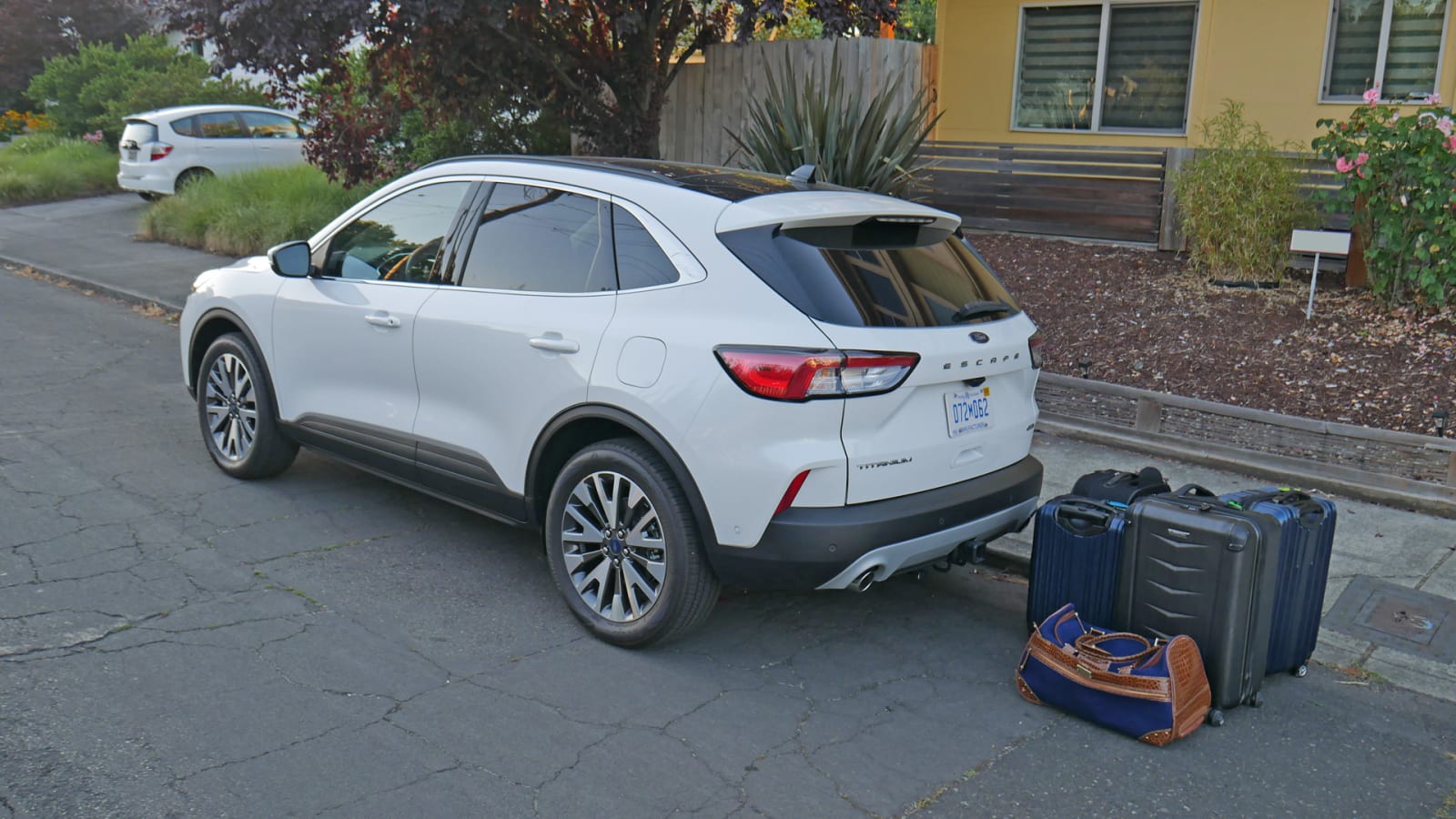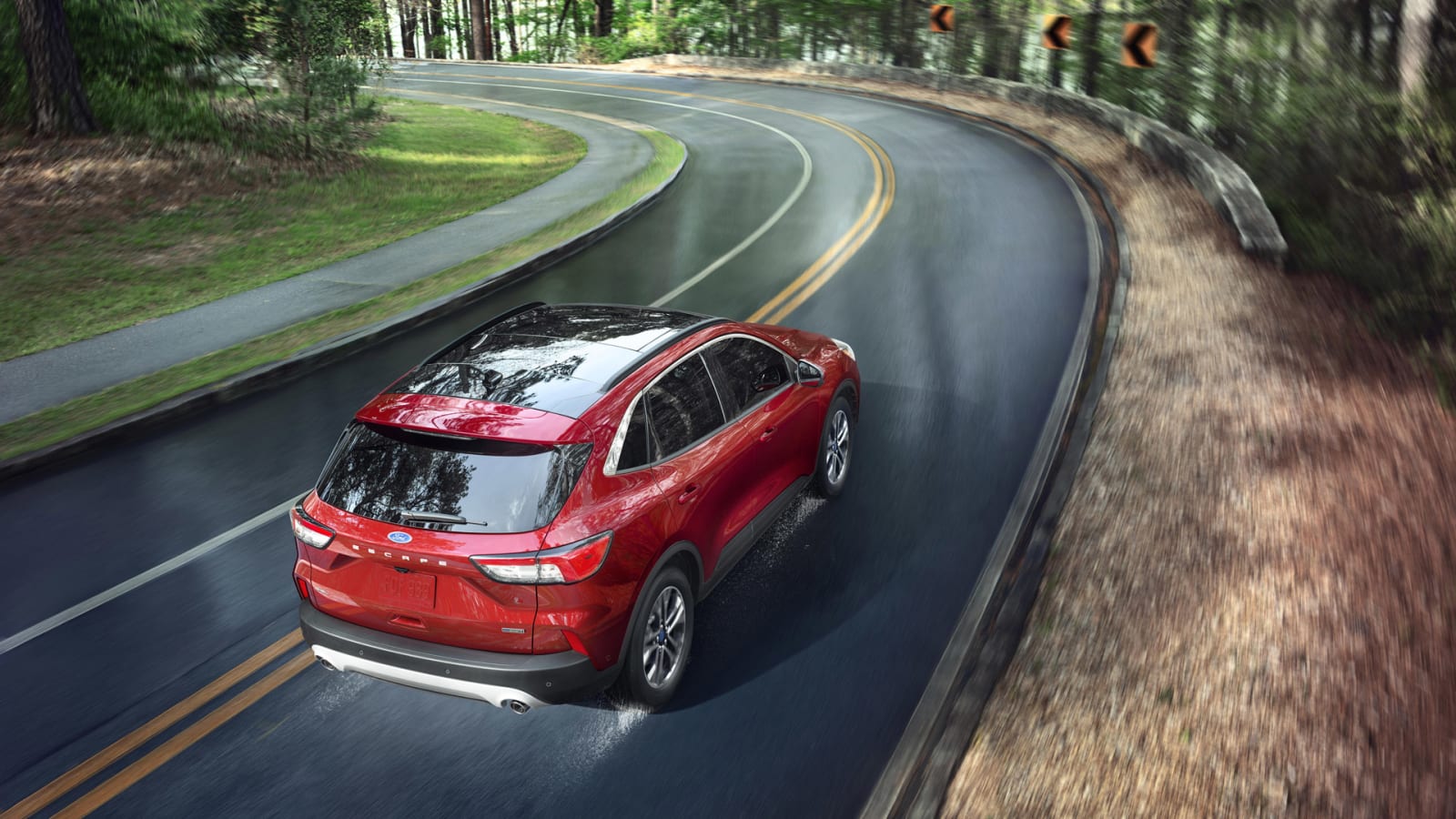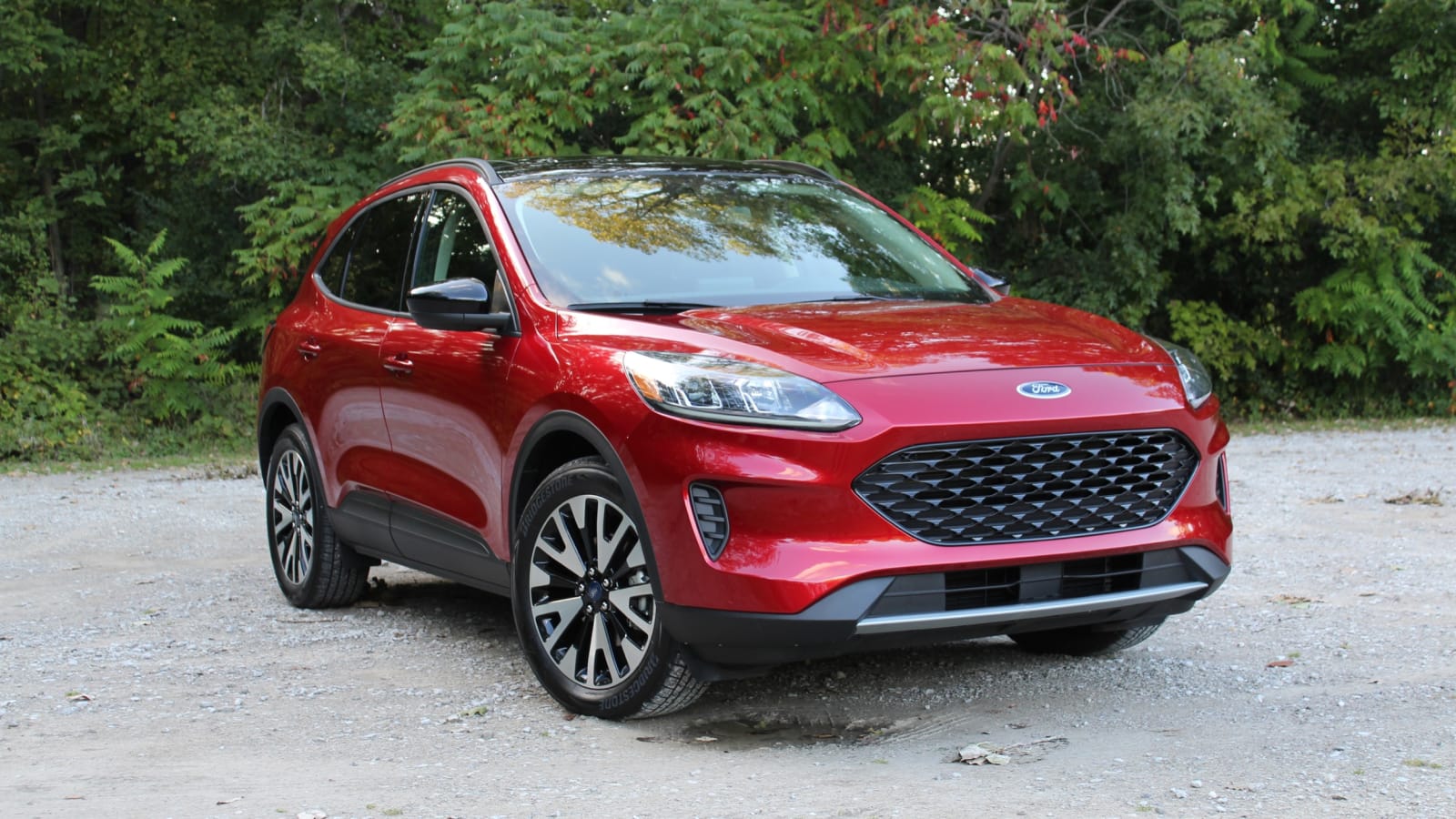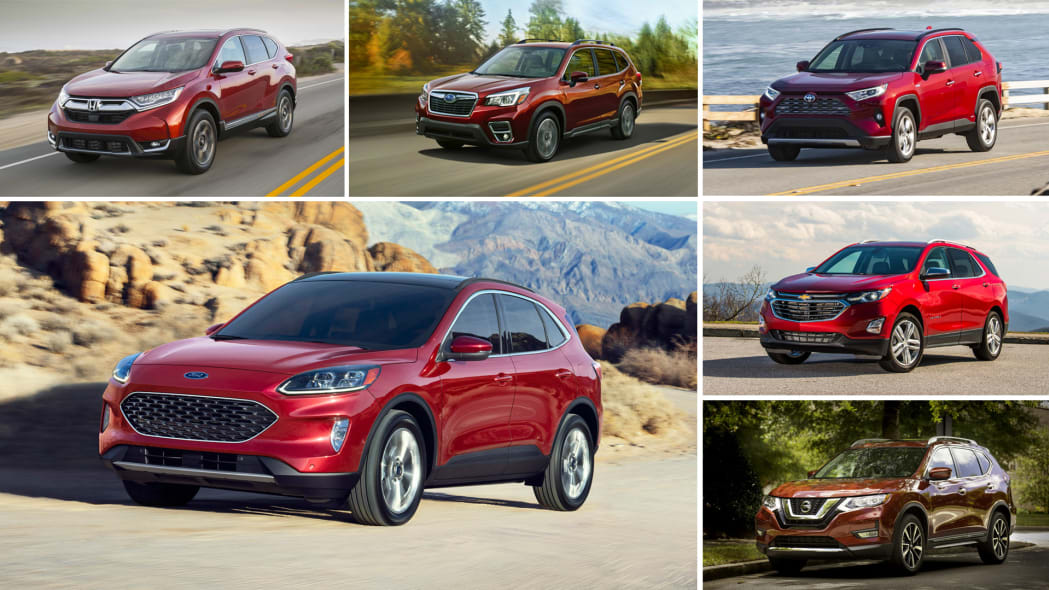The 2021 Ford Escape is basically Ford’s way of acknowledging that people are ultimately flocking to crossovers for three key elements: a tall driving position, extra versatility and available all-wheel drive. If they really do want old-school SUV virtues like ground clearance and off-road capability, that’s what the new Bronco Sport is for. Think of the Escape as the on-road ying to the baby Bronco’s off-road yang. It’s more spacious, comfortable and fuel efficient. It also handles better and is available in a pair of impressive hybrid models. Those two attributes not only stand out in comparison to the Bronco Sport, but within the compact crossover segment in general: Few competitors offer such electrified powertrains, and few are as engaging to drive.
Indeed, the Escape is an agreeable suburban runabout that checks off a lot of boxes for those seeking a small SUV. We wouldn’t necessarily call it a top choice – the Honda CR-V, Toyota RAV4, Nissan Rogue and Mazda CX-5 are all generally stronger when comparing volume-selling mid-grade trim levels and base gas-only engines. But it’s certainly not a bad choice, and those hybrid powertrains, especially the new-for-2021 plug-in version, mean it’s a must-consider.
What’s new for 2021?
The Escape Plug-In Hybrid debuts for 2021, a compelling new addition that can go an estimated 37 miles on electricity alone and is rated for 100 miles-per-gallon-equivalent. Elsewhere in the Escape lineup, features availability has been extensively adjusted, with various items being added to trim levels as standard equipment or moved into packages. Presumably this was done based on customer and dealer feedback after the current Escape’s first year on the market. The available adaptive cruise control system is also upgraded with speed sign recognition, and there are four new colors.
What’s the Escape interior and in-car technology like?
We take a deep dive into the Escape interior’s quality, technology, storage and space in this Escape Interior Driveway Test, so we’ll only touch on the high and low points here.
Interior storage is plentiful and thoughtful, especially the area devoted to smartphones. The sliding back seat also adds versatility, though we’ll touch on that more below and in our Escape Luggage Test. In terms of technology, all but the most basic Escape (pictured in the first slide above) comes with a large touchscreen that’s easily seen and reached. It runs Ford’s Sync 3 interface, which is technically previous-generation tech, but only the newest, fanciest Fords like the Mach-E, Bronco and F-150 are running Sync 4. In general, we like its clean, easily read graphics featuring large icons on a white background. It does the basics well, and although we have nits to pick with its Apple CarPlay integration, there’s far more good than bad. We’re also fans of the configurable digital instrument panel standard on the hybrids and gas-only Titanium.
On the other hand, we wouldn’t call the design particularly eye-catching, and its air vent placement results in awfully chilly knuckles. Worse, the Escape’s interior quality has gone downhill for this generation. The doors are lined in rubbery plastic rather than cloth or pleather, the cargo area is lined in brittle, scratch-prone plastic, and we found evidence of iffy fit-and-finish. The Titanium has some of the least convincing wood trim you’ll find in a car.
![]()
![]()
![]()
![]()
How big is the Escape?
The Escape basically offers average passenger and cargo space for a compact crossover. With 33.5 cubic feet of space, its cargo area can hold five sizeable pieces of luggage plus a duffel bag or two. A Honda CR-V or Toyota RAV4 can hold more (including in terms of maximum space), but the Escape has a trick up its sleeve: a sliding back seat that frees up extra room should you not need as much rear passenger space. Few competitors provide such a feature. Plus, there’s a good chance you won’t need all the space offered by that back seat since there is an abundant 40.7 inches of maximum legroom. A 6-footer has no problem sitting behind another 6-footer.
![]()
![]()
What are the performance and fuel economy?
For 2021, no compact crossover offers as many powertrain options as the Ford Escape thanks to the addition of its plug-in hybrid model.
The standard engine is a 1.5-liter turbocharged inline-three that produces 180 horsepower and 177 pound-feet of torque. Yes, only three cylinders, and there’s cylinder deactivation, so it can actually operate as a two-cylinder to save fuel. Nifty! An eight-speed automatic is standard on every gas-only Escape. Fuel economy is 28 miles per gallon city, 34 mpg highway and 30 mpg combined with front-wheel drive, and 28/31/26 with optional all-wheel drive.
Available on the SEL and Titanium is a 2.0-liter turbo inline-four that ups output to 250 horsepower and 280 pound-feet of torque. You’ll need to fill it with premium to get that exact amount, but regular is OK. All-wheel drive is mandatory, and fuel economy comes in at 23/31/26 mpg, which means going with the big motor is a great idea if you’ll be doing a lot of highway driving.
The Escape Hybrid combines a naturally aspirated four-cylinder and an electric motor to produce a total system output of 200 hp. Its battery pack is replenished by recapturing energy usually lost by braking or coasting. Unlike the Toyota RAV4 Hybrid, its available all-wheel drive system is a mechanical one rather than relying on a second electric motor on the rear axle to provide quasi-AWD. Fuel economy is an exceptional 44 mpg city, 37 mpg highway and 41 mpg combined with FWD and 43/37/40 with AWD. This is on par with the RAV4 and CR-V hybrids.
The new 2021 Escape Plug-in Hybrid (PHEV) basically just adds a much larger battery that can be recharged by plugging into your house or a public charger. This extra capacity allows for an estimated 37 miles of all-electric driving, which should be good enough to cover most commutes. Once this range is depleted, the PHEV essentially operates like the regular hybrid, recouping just enough energy through braking and the engine to contribute electricity to the motor. Its MPG-equivalent rating is 100 MPG-E, which is slightly better than the RAV4 Prime, but when you’re talking such sky-high efficiency, it doesn’t really matter. Note that the PHEV is only available with front-wheel drive.
What’s the Escape like to drive?
Despite being bigger than the outgoing model, the new Escape is more carlike to drive. It now feels even more like a Ford Focus that has been lifted off the ground. Its chassis is stiff and the suspension is just on the firm side of comfortable (much as the outgoing Escape’s was), making it one of the more engaging options in its segment. As is the case with most modern compact crossovers, the Escape’s steering is overboosted and light, but it’s reasonably precise.
The base 1.5-liter turbocharged three-cylinder engine is paired to a traditional eight-speed automatic transmission. While a little sluggish off the line, it comes to life as the turbo builds pressure. It feels smooth and responsive switching through the gears, and we’re glad Ford avoided putting a continuously variable transmission in here (as the Honda CR-V and Subaru Forester have). The more powerful 2.0-liter turbo-four is certainly quicker, but it, too, can feel a little slow off the line. Once under way, passing power from the 2.0-liter is very good due to its abundance of midrange torque, and it’s rated to tow as much as 3,500 pounds.
Despite having less torque than the gas-only powertrains, the Escape Hybrid’s torque comes early, helping it get moving quickly at low rpm. Its electronic CVT can drone a bit, especially under steady acceleration, but it’s not bothersome under most driving. Like other Escapes, the hybrid’s chassis feels stiff, which helps contribute to a comfortably firm ride and playful handling characteristics. We’ve yet to drive the plug-in hybrid, but given Ford’s past efforts, we would expect it to only increase the Escape Hybrid’s appeal.
What more can I read about the Escape?
Our editors test the Escape Hybrid, finding it got fuel economy in the low to mid 30s without much effort to be thrifty.
Our editors in Michigan spend some time with the range-topping Escape. In short, they appreciate its performance and fun driving experience, but the price and interior quality are questionable.
![]()
Our deep dive into the Escape’s interior, including its technology, quality, storage and space.
![]()
We took a look at its cargo capacity in a second test, showing how much can fit in the cargo area with the back slid forward and rearward.
![]()
A first drive review of the 2020 Ford Escape, with driving impressions, specs and photos.
![]()
Our first go behind the wheel of the Hybrid, which we found to be “no fun-sapping miserly version aimed solely at those trying to save a buck at the pump.”
![2020 Ford Escape Hybrid]()
We compare the ford Escape’s specs to those of the Chevrolet Equinox, Honda CR-V, Nissan Rogue, Subaru Forester and Toyota RAV4.
![]()
What features are available and what’s the price?
Pricing starts at $24,885 for the base Escape S, including the $1,245 destination charge. All-wheel drive is an extra $1,500 for each trim level. The S is pretty bare bones (steel wheels, plastic steering wheel), but still includes a suite of accident avoidance tech described in the Safety section below. As is the case with most compact crossovers, though, we imagine the mid-grade SE is the happy zone most customers flock to first. Its key upgrades include alloy wheels, the Sync 3 touchscreen, a power driver seat, heated front seats and automatic climate control. It also opens up the door to various options package which include some of the features included on the SEL and Titanium.
You can find a full breakdown of the Escape’s features, specs and local pricing here on Autoblog. The Escape PHEV’s is located here.
All pricing below includes the destination charge and is for a front-drive model unless otherwise noted.
S: $24,885
SE: $26,130
SE: $27,855
SEL: $30,450
Titanium AWD: $37,400
Hybrid SE: $28,850
Hybrid SEL: $31,445
Hybrid Titanium: $34,545
PHEV SE: $33,895
PHEV SEL: $36,755
PHEV Titanium: $39,830
Note that the PHEV is eligible for a $6,843 federal tax credit plus additional state-level tax credits where applicable. As such, the plug-in hybrid can end up being cheaper than the equivalent gas-only and regular hybrid versions. You just have to be willing to wait for that tax rebate.
What are its safety equipment and crash ratings?
Every Escape comes standard with Ford Co-Pilot 360, which includes blind-spot warning and rear cross traffic warning, lane-keeping assist and automatic emergency braking with pedestrian detection. Adaptive cruise control and lane centering are optional.
The government gave the Escape top five-star ratings for overall, frontal and side crash protections. The Insurance Institute for Highway Safety named it a 2020 Top Safety Pick for its crash test results and standard accident-avoidance ratings, plus sufficiently high headlight scores. Its LATCH anchor rating was also the best-possible for their ease of use.
Source link


